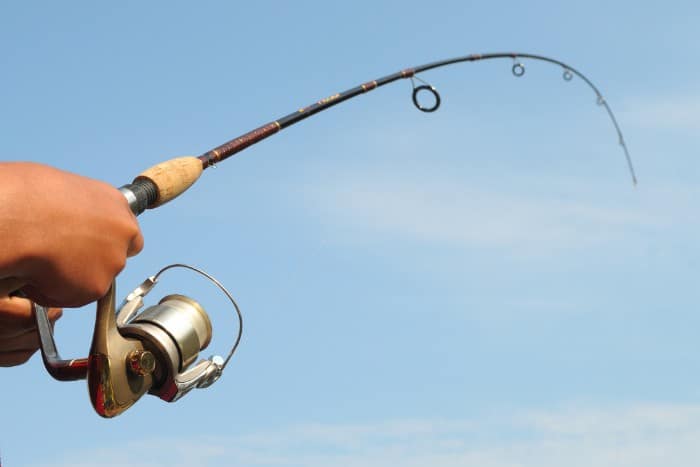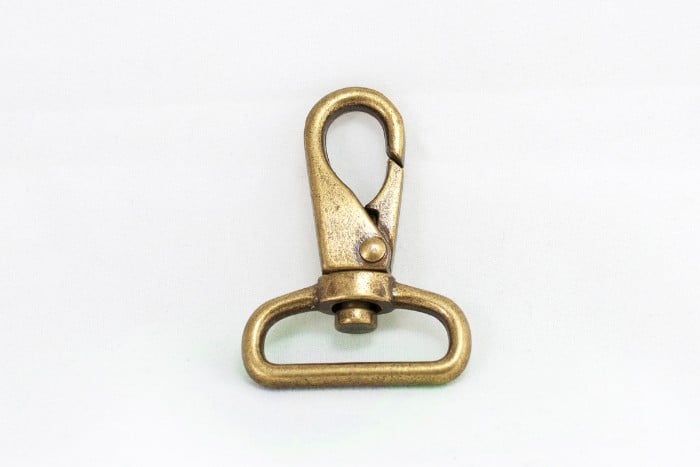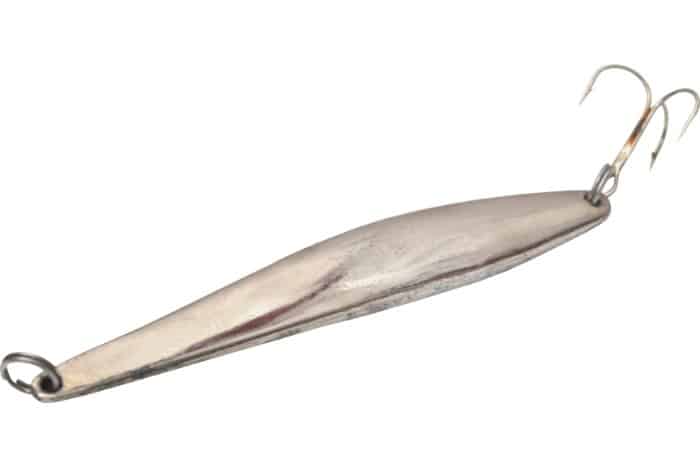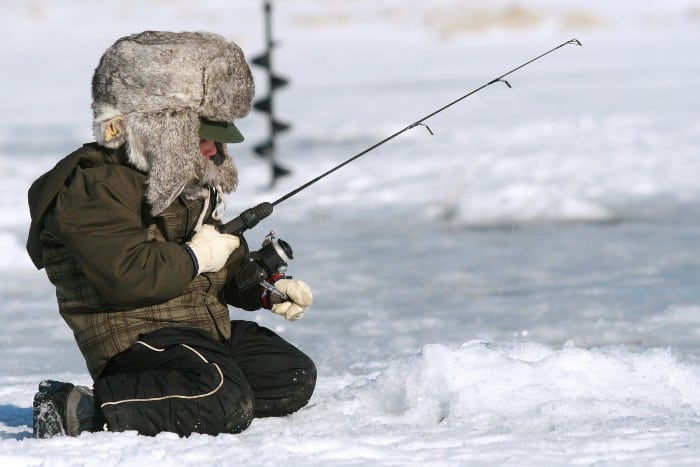Ice fishing techniques fall into two main categories: traps and active fishing. This article will primarily cover the active style of fishing, specifically how to rig your jigs to catch the most fish.
Ice fishing jig setups are as simple or complex as you choose to make them. You can choose something as simple as a jig head with a waxworm or use a combination of swivels, dropper lines, spoons, and multiple hooks. There is a method that you’ll like more than another, so make sure to experiment.
Keep reading to learn more about setting up your ice fishing jigging combo, including selecting the right gear and using the right rig.
Pick The Right Gear For Jigging And Your Target Species
The first step to using a jig setup for ice fishing is ensuring you have the right gear on hand.
You might want to check out our article on: What Jigs To Use For Ice Fishing?
Don’t worry; you can probably make do with the equipment you already have, but the gear outlined below is specialized for jigging and will perform the best.
1. Pick The Right Fishing Rod
Jigging can result in very subtle bites depending on the species of fish you are targeting. To feel when the fish bite, you’ll want to use a very sensitive fishing rod that will help you notice if the fish takes the bait.
Ultra-fast action rods with the appropriate power for the species of fish you are targeting will work best, followed by fast-action rods. These rods have very sensitive tips for detecting very light bites.
Graphite rods are the most sensitive and the best for jigging, but fiberglass rods are much more affordable and will still work fine.

2. Use The Right Fishing Line
Whether using it as the leader line or spooling it on your whole reel, fluorocarbon is excellent for smaller species of fish and very line-sensitive fish thanks to its near invisibility underwater.
Monofilament is also a good choice, especially if you are targeting large fish species.
One of the benefits of monofilament in this situation is that jigging rods are very stiff, and the extra stretch can absorb the shock when you set the hook and help prevent you from pulling the hook right out of the fish’s mouth.
3. Choose The Right Jig Heads, Bait, And Lures
Depending on how you set up your rig, you’ll want to choose different gear for that specific setup.
We’ll discuss other ways to rig your gear below, but you’ll want to select the correct sizes for the rod you are using.
Lightweight and under-sized jig heads are an excellent method for ice fishing when the fish might be a little picky.
Your jig should weigh just enough to bend the tip of your rod just a little, so you’ll be able to tell if a fish takes the bait and swims down or if the fish swims up and takes the pressure off your rod.
You can use bait depending on the size of fish you are targeting, with waxworms and spikes being good for panfish and other small fish, or use minnows for targeting large trout and other large predator fish.
Using a spoon with live bait is a great way to cause additional vibration and flashes in the water, mimicking a dying fish and drawing more fish to investigate your rig.
How To Rig Your Jig? : 7 Different Tips
Below are a few different tips you can implement in your jigging setup. This advice will help you easily experiment with combinations to find what works and is best in your fishing area.
1. Try Using A Swivel
While a swivel might not be 100% necessary, using a swivel attached to your line with about a 1-foot leader on the other side has a lot of benefits.
The most notable is that utilizing a swivel will prevent line twist, one of the most common problems while jigging.
Line twist is caused by the bait spinning in circles and twisting up your line, causing it to coil and get tangled rather than laying flat on your reel.
In addition to being an annoying problem, a twisted line can result in your bait not looking natural and scaring fish away.

2. Fast Snaps Make For Quick Lure Changes
If you plan on swapping between lures often and only have one or two rods to use, then a fast snap at the end makes switching lures a breeze.
A snap will let you go from a spoon to a swimming jig in seconds without needing to retie line.
Not all anglers like to use fast snaps, but this can be especially helpful if you are new to ice fishing and unsure what bait and tackle to use.
Snaps let you swap between different gear and experiment without losing unnecessary time on the ice.
3. Jig Head With Live Bait
One of the most straightforward jig setups is live bait on a jig head.
Depending on what is suitable for your targeted species, the live bait can be two waxworms or a whole minnow hooked on the end of the jig head.
This setup is simple and easy to use, making it ideal for beginners and seasoned anglers alike.
Using live bait is the best way to catch fish while ice fishing, and adding an extra pop of color in a jig head can increase your bites.
1/32-ounce jig heads are suitable for many common species that will feed on insect live bait, and ⅛-ounce jig heads are ideal for minnows or fishing in deep water.
4. Spoon Jigs
Spoon jigs can be fished with or without additional bait and come in curved and straight varieties.
Spoon jigs also come in many different colors, and the best way to choose is by matching the colors of the bait fish in the water you are fishing.
Spoons designed for ice fishing can have a few different actions, some falling straight down and others that will flutter and vibrate on their way down.
Fish will have different preferences depending on the day, so be sure to pack a few different styles to try.

5. Jigging Lure
A jigging lure is one of the most popular styles of lure used while ice fishing and has proven to be a practical part of many anglers’ toolkits.
These lures provide a lot of circular and side-to-side movement when jigged, mimicking an injured fish.
Jigging with this lure involves a quick pulling movement upwards, then letting the lure fall in a circular motion on the way down, where it is likely to be snatched if a fish is nearby.
6. Dropper Rig
You can set up a dropper rig in a few different ways, but the concept is the same: using a spoon with a short leader made of line or a dropper chain, leading to live bait.
Dropper rigs combine the best of two worlds: a live minnow or other bait and the attractive movement of a spoon.
7. How To Jig While Ice Fishing
Jigging the bait is simple but offers the fisherman many possible variations and options.
In the simplest form, jigging is moving the bait up and down to mimic injured fish and attract nearby fish looking for an easy meal.
Jigging can be done by moving the tip of your rod up and down or side to side. You can also vary the tempo from a few light jerks of the rod and then letting it sit or using a more aggressive motion.
Most of your movements should be pretty smooth and done with purpose rather than frantically moving your rod up and down.
Most of the time, fish are attracted to the bait’s movement and will strike it while it is falling, so be sure to let your bait rest after jigging it a few times.
The best part of the water column is about 1-2 feet off the bottom, which can be achieved with a flasher or by letting your bait hit the bottom and reel up a small amount.
Everyone will have different opinions on what works for them, so experiment with different tempos, frequencies, and baits to find out what the fish are biting.
Sometimes fish are excited to bite anything that moves, and sometimes they prefer particular movements.

Wrapping Up!
Ultimately, setting up your jig rig for ice fishing can be as straightforward or as complicated as you want to make it.
A weighted jig head and some bait is all you need, although having more options makes ice fishing an increasingly fun hobby and will improve your odds of having the right tools to catch the fish.
An essential part of jigging is getting the right movements down, which is easier to develop with experience.
Just remember, you want to make your bait look natural and mimic an injured fish as much as possible.
